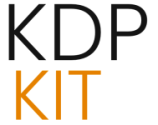The U.S. Publishing Industry in 2024: A Resilient Market Thriving on Print and Digital Innovation

As of August 27, 2025, the U.S. publishing industry is showcasing remarkable resilience and adaptability, with aggregate revenues reaching an impressive $32.5 billion in 2024. This figure represents a healthy 4.1 percent increase compared to the adjusted $31.3 billion generated in 2023. The Association of American Publishers (AAP) StatShot annual report, which meticulously analyzes data from 1,281 publishers over a five-year span from 2020 to 2024, paints a vibrant picture of a dynamic and evolving sector. This comprehensive overview delves into the key financial performances, format trends, and distribution channels that defined the publishing landscape throughout 2024, offering valuable insights for authors, publishers, and industry enthusiasts alike.
The Publishing Industry’s Robust Growth Trajectory in 2024
The U.S. publishing industry demonstrated significant resilience and growth in 2024, with total revenues across all tracked categories experiencing a healthy year-over-year increase. The AAP’s StatShot report confirms a robust performance, with the overall market up by 4.1 percent compared to the previous year. This upward trend underscores the industry’s capacity to adapt to shifting consumer behaviors and embrace technological advancements. The report, a collaborative effort between Industry Insights Inc. and the AAP, provides a detailed and reliable snapshot of the U.S. publishing market’s financial health. This sustained growth is a testament to the enduring appeal of published content in its many forms.
Year-Over-Year Revenue Surge
The aggregate revenue of $32.5 billion in 2024 signifies a positive and encouraging trajectory for the publishing sector. This increase reflects a sustained demand for published content across a diverse range of formats and categories. The AAP’s data, compiled from a substantial number of participating publishers, offers a dependable overview of the industry’s economic standing, confirming a strong year for publishers nationwide.
A Five-Year Perspective: Trends Shaping the Market
Examining the period from 2020 to 2024 reveals several enduring trends that continue to shape the publishing landscape. Notably, print formats have consistently maintained a dominant position, accounting for over half of the total market revenue throughout these five years. This enduring preference for physical books highlights a unique characteristic of the contemporary reading market. Concurrently, the digital audio format has exhibited remarkable sustained growth, with revenues increasing by nearly 80 percent since 2020, indicating a significant shift in consumer listening habits. This dual strength in both print and digital formats showcases the industry’s ability to cater to a wide spectrum of reader preferences.
Data Integrity: The Foundation of the AAP StatShot Report. Find out more about US publishing industry revenue 2024.
The findings presented in the AAP StatShot annual report are based on confidential data collected from 43 participants, representing a significant cohort of 1,281 publishers. This extensive data set, covering the crucial period from 2020 to 2024, ensures a thorough and representative analysis of the U.S. publishing market. The meticulous maintenance of this data by Industry Insights Inc. guarantees its integrity and confidentiality, providing a trustworthy foundation for industry analysis.
The Unwavering Strength of Print in a Digital Age
Despite the significant and ongoing growth in digital formats, print media continues to hold a commanding presence in the U.S. book publishing industry. In 2024, print formats—encompassing hardback, paperback, mass market, and special bindings—accounted for a substantial 50.5 percent of publishers’ overall revenue. This persistent preference for physical books underscores a unique characteristic of the contemporary reading market, proving that the tangible experience of reading a book remains highly valued by consumers.
Print’s Dominant Revenue Share
The continued strength of print formats underscores their lasting appeal to consumers. This segment of the market demonstrates a consistent ability to generate significant revenue, contributing more than half of the industry’s total income in 2024. This dominance highlights that while digital options are popular, the physical book is far from obsolete.
Performance Highlights Across Key Print Segments
Within the print category, hardback books saw a notable increase in revenue, reaching $3.5 billion. Paperbacks also performed exceptionally well, with revenues totaling $3.2 billion. However, the Mass Market paperback segment experienced a decline, with revenues falling by 13.3 percent to $122.9 million. Special Bindings, conversely, showed positive growth, increasing by 4.3 percent to $231.7 million in revenue. This varied performance within print segments suggests nuanced consumer preferences even within the physical book market.. Find out more about AAP StatShot report 2024 findings guide.
The Ascendancy of Digital Audio and Ebooks: Capturing New Audiences
The digital publishing landscape in 2024 was significantly shaped by the continued rise of digital audio and ebooks. These formats collectively represented 14 percent of all industry revenue, marking an impressive 11.4 percent increase since 2023. The growth in these digital segments reflects evolving consumer preferences for accessible, portable, and on-the-go content consumption, demonstrating a clear appetite for digital solutions.
Digital Audio’s Remarkable Growth Story
Digital audio, in particular, experienced a substantial surge in popularity and revenue. In 2024, digital audio generated $2.4 billion in revenue, an impressive increase of 22.2 percent compared to the previous year. Over the five-year period from 2020 to 2024, digital audio revenue grew by a remarkable 78.1 percent, indicating a strong and sustained trend that shows no signs of slowing down. This growth is largely attributed to the convenience and multitasking capabilities offered by audiobooks, making them a favorite among busy consumers.
Ebook Market Performance: Steady and Significant
Ebooks also contributed significantly to the digital revenue stream, with total revenues reaching $2.1 billion in 2024, an increase of 1.5 percent from 2023. Within the trade sector, ebooks accounted for 1.8 percent of the overall revenue, demonstrating steady and consistent growth. While not growing as rapidly as digital audio, ebooks continue to be a vital part of the digital publishing ecosystem.
Digital Formats in the Trade Sector: A Growing Preference. Find out more about Print book sales growth 2024 tips.
In the trade (consumer books) segment, digital formats collectively represented 21.2 percent of the total revenue in 2024. This segment saw a notable increase of 11.8 percent for digital formats. Specifically, digital audio revenue for trade books grew by 22.5 percent, while ebook revenues saw an increase of 1.8 percent, underscoring the growing consumer adoption of these formats. This data highlights a clear trend towards digital consumption within the consumer book market.
Category Breakdowns: Diverse Performance Across Publishing Sectors
The AAP’s StatShot report provides a granular view of revenue performance across various publishing categories, including Trade, Religious Presses, Higher Education Course Materials, and Professional Publishing. Each category exhibited unique growth patterns and market dynamics throughout 2024, showcasing the diverse nature of the publishing industry.
Trade Publishing Sector: The Market’s Backbone
The Trade (consumer books) sector remained the largest segment of the U.S. publishing market, generating an estimated $21.2 billion in 2024, an increase of 4.4 percent from the previous year. This growth was driven by strong performances in both print and digital formats, reflecting a broad consumer base for trade publications. This sector’s consistent strength highlights the enduring demand for general reading material.
Religious Presses’ Exceptional Growth
Religious presses demonstrated exceptional growth in 2024, with revenues up by 18.9 percent year-to-date, reaching $909.2 million. This surge was particularly evident in hardback revenues, which increased by 23.7 percent to $560.1 million. Paperback revenues also saw a significant rise of 11.6 percent, totaling $171.0 million. The digital audio format within religious presses also experienced robust growth, up 13.4 percent to $51.3 million. This remarkable performance suggests a strong spiritual seeking among consumers, driving demand for faith-based literature across all formats.
Higher Education Course Materials: Steady Demand. Find out more about Digital audiobooks market share 2024 strategies.
The Higher Education Course Materials segment generated $2.5 billion in revenues for 2024, marking a 6.7 percent increase compared to 2023. This growth indicates a steady demand for educational content, with both print and digital formats contributing to the overall revenue. Inclusive Access revenues saw a significant increase of 25.9 percent, reaching $256.1 million. The continued growth in this sector reflects the ongoing need for up-to-date and accessible learning resources for students.
Professional Publishing Segment: Navigating a Mature Market
Professional books, encompassing business, medical, law, technical, and scientific publications, experienced a slight decline in revenue. For the twelve months of 2024, revenues were down 0.5 percent compared to 2023, totaling $459.7 million. This segment’s performance suggests a more mature market or shifts in how professionals consume information, perhaps leaning towards specialized online databases or subscription services.
Channel Dynamics: The Dominance of Online Retail
The distribution of published content in the U.S. market is increasingly channeled through online retail platforms. In 2024, publisher sales via online retail constituted the largest category of channel action, amounting to $12 billion. This dominance highlights the pivotal role of e-commerce in reaching consumers across all publishing segments, demonstrating a clear shift in purchasing habits.
Online Retail’s Market Supremacy
Online retail platforms captured a significant portion of the market, with digital formats (ebooks and digital audio) accounting for 34.5 percent of revenue within this channel. Print formats represented 57.1 percent, while instructional materials and physical audio or other formats made up the remaining percentages. This breakdown clearly shows that while online retail is a massive channel, print still holds a strong position within it.. Find out more about publishingperspectivescom.
A Closer Look at Online Channel Revenue Streams
Within the online retail channel, print formats maintained the largest share of revenue. However, digital formats, including ebooks and digital audio, showed strong performance, indicating a growing consumer preference for digital purchasing options. Instructional materials and physical audio also contributed to the overall revenue generated through online channels. This multifaceted approach to online sales underscores the importance of a robust digital presence for publishers.
Emerging Trends and the Future Outlook for Publishing
The U.S. publishing industry in 2024 was characterized by several key trends that are likely to shape its future. The continued evolution of digital formats, the enduring strength of print, and the increasing influence of new technologies are all critical factors for publishers to consider as they plan for the years ahead.
The Enduring, Unshakeable Appeal of Print
The sustained dominance of print formats, accounting for over half of the market revenue, suggests that physical books continue to hold a special place for many readers. This trend indicates that print is not merely a legacy format but a vital and cherished component of the contemporary publishing ecosystem. For many, the tactile experience of holding a book, turning its pages, and displaying it on a shelf is an irreplaceable part of the reading journey.
The Rise of Niche Publications in the Digital Sphere. Find out more about US publishing industry revenue 2024 overview guide.
The digital publishing space is also seeing a rise in niche publications. These platforms cater to specific reader communities with distinct interests, fostering dedicated and engaged audiences. This hyper-focused approach allows for deeper reader connection and can be a successful strategy in a saturated digital market. By serving specialized interests, these publications build loyal followings that are less susceptible to broad market fluctuations.
Artificial Intelligence: A Transformative Force in Publishing
Artificial Intelligence (AI) is increasingly influencing the publishing industry, from content creation to market analysis. AI-powered tools are being used to optimize operations, personalize content, and streamline various publishing processes. While AI offers significant potential for efficiency and innovation, its role in the creative process also raises important questions about authorship, originality, and the ethical implications of AI-generated content. Many publishers are exploring AI for tasks like market trend analysis, reader engagement strategies, and even drafting marketing copy, but the core creative process remains firmly in human hands. For example, AI can help identify emerging trends in genres like “romantasy,” which saw significant growth in 2024, but it’s human authors who craft the stories that captivate readers. [SOURCE: Publishers Weekly] [SOURCE: Fast Company]
Interactive and Immersive Content: The Next Frontier
Technologies such as Augmented Reality (AR) and Virtual Reality (VR) are opening new avenues for interactive and immersive content. By blending virtual and real-world experiences, these technologies offer readers more engaging and dynamic ways to consume content, from enriched ebooks to articles with embedded 360-degree videos. While still in their early stages of adoption within publishing, AR and VR hold the potential to revolutionize how stories are told and experienced, offering publishers new ways to engage audiences and create memorable content. [SOURCE: Hurix Digital]
Conclusion: A Dynamic Industry Poised for Future Success
The 2024 AAP StatShot annual report paints a picture of a U.S. publishing industry that is not only resilient but also dynamic and forward-looking. With aggregate revenues reaching $32.5 billion, the sector demonstrates consistent growth, driven by a balanced performance across both print and digital formats. The sustained popularity of print, coupled with the remarkable growth of digital audio and ebooks, highlights the diverse preferences of today’s readers. As the industry continues to navigate technological advancements and evolving consumer behaviors, it remains well-positioned for continued success and innovation in the years to come. The interplay between traditional print and burgeoning digital technologies ensures a vibrant and ever-evolving future for publishing.
Key Takeaways for 2024:
- Overall Growth: The U.S. publishing industry saw a healthy 4.1% increase in revenue, reaching $32.5 billion in 2024.
- Print Remains King: Print formats continue to dominate, accounting for over half of all industry revenue.
- Digital Audio Soars: Digital audiobooks experienced a significant surge, growing 22.2% year-over-year and showing an 78.1% increase over five years.
- Category Strength: Religious presses saw exceptional growth (18.9%), while Trade books remained the largest segment.
- Online Retail Dominance: Online retail channels are the primary distribution method, capturing $12 billion in publisher sales.
As we look ahead, staying attuned to these trends and embracing innovation will be crucial for continued success in the ever-evolving world of publishing. What are your thoughts on the future of print versus digital? Share your insights in the comments below!









